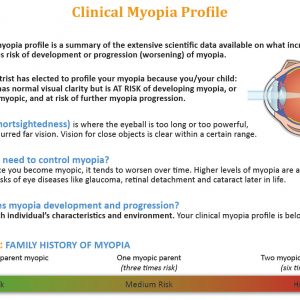Which Option To Slow Myopia Infographic
$10.00
A simple to use printable reference guide to assist prescribing of myopia control products and gauging ongoing success.
Price in US$
Description
Struggling with knowing what to prescribe?
The ‘Which option to slow myopia’ is a world first, evidence based decision making tool, providing guidance on selecting the right treatment for your young myopic patient. Our international focus group testing, prior to release, means we’re confident you’ll find this tool extremely useful in clinical practice.
Glasses options
Spectacle lens options are often the first choice for the younger patient, or the only choice for a child not suitable for contact lens wear. This section of the infographic provides prescribing selection based on evidence of efficacy based on binocular vision status.

Contact lens option
Specific considerations in fitting myopia controlling contact lenses include safety, astigmatism, level of myopia and binocular vision status. Even if you don’t have access to all of these options in your country or practice, you’ll find a management pathway in this infographic.

Gauging success
Myopia management is a long term process – how do you know it’s working? This section of the infographic elegantly summarises the average amount of myopia progression we’d expect to measure each year, by age, if employing no myopia management strategy (0% efficacy), multifocal spectacles (around 33% efficacy) or multifocal contact lenses including OrthoK (50% efficacy). Atropine is not included as its efficacy appears to be dose-dependent.

A world first, evidence based decision making tool, this engaging infographic provides guidance on selecting the right treatment for your young myopic patient. It includes info on spectacle lens, soft multifocal, OrthoK and atropine options; binocular vision and specific contact lens considerations; and even gauging success.
Even if you don’t have access to all of these treatment strategies in your country or practice, you will find a management pathway in this flow chart. Our international focus group testing, prior to release, means we’re confident you’ll find this tool extremely useful in clinical practice.
You can read more about the infographic, including accessing additional learning resources, in the blog Which Option To Slow Myopia? New Clinical Management Infographic.
Thanks to the generous efforts of our colleagues across the world we are to offer the following language translations:
- French: Philippe Seira
Additional information
| Language | English, French |
|---|

















